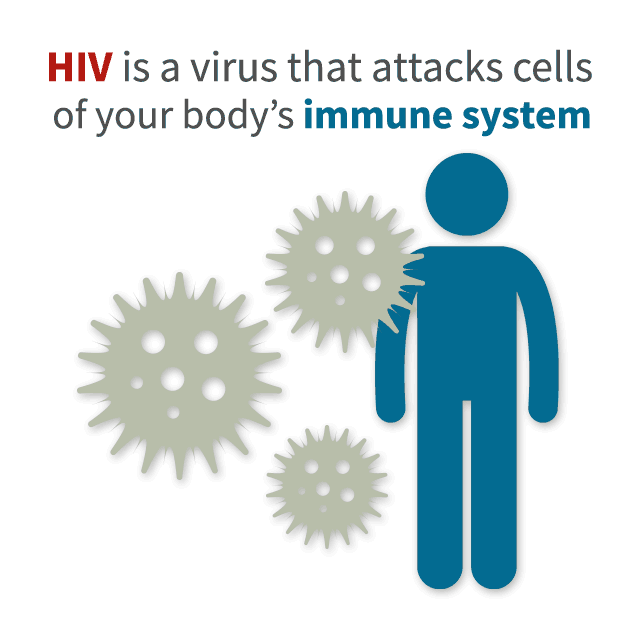



Business Inquiry
Global:
Email:marketing@medicilon.com
+1(781)535-1428(U.S.)
0044 7790 816 954 (Europe)
China:
Email: marketing@medicilon.com.cn
Tel: +86 (21) 5859-1500



Human immunodeficiency virus (HIV) is a type of virus called a retrovirus, which infects the human immune system. HIV may cause AIDS by eventually killing the white blood cells, which a healthy body uses to fight off disease. CRISPR screening identifies potential HIV treatment targets.CRISPR-based genetic screens widely used for functional genomics typically involve a Cas9 nuclease and a complex library of guide RNAs (gRNAs) to direct gene-inactivating edits in a high-throughput manner.

We may one day succeed in pulling the welcome mat out from under the human immunodeficiency virus (HIV), which until now has shown no compunction about taking advantage of human genes that are needed for its replication. Several such genes, or host-dependency factors, have been identified in a new study that suggests new treatment possibilities. According to this study, if newly discovered host-dependency factors can be targeted for disruption while maintaining cellular proliferation viability, it may be possible to suppress HIV while preventing it from developing resistance.
The study, which was led by investigators from the Ragon Institute and the Broad Institute, used the revolutionary new gene-editing technology CRISPR-Cas9 to identify three promising new targets for treatment of HIV infection. Essentially, the investigators screened HIV-susceptible CD4 T cells, knocking down specific genes and determining whether their inactivation could help the cells become less hospitable to HIV—while preserving the cells’ ability to take care of themselves.CRISPR screening is a large-scale genetic loss-of-function experimental approach designed to find the equivalent of a few needles in a haystack. CRISPR screening facilitates discovery of key genes or genetic sequences that elicit a specific function or phenotype for a cell type.
Ultimately, the Ragon/Broad team identified five genes, three of which had not been identified before. The other two had been found in earlier studies in which RNA interference (RNAi), not CRISPR/Cas9, had been used to interrogate the genome.
Details appeared December 19 in the journal Nature Genetics, in an article entitled, “A Genome-Wide CRISPR Screen Identifies a Restricted Set of HIV Host Dependency Factors.” The article described how the scientists not only confirmed the two known host factors, the genes for the HIV co-receptors CD4 and CCR5, but also revealed the following host factors—tyrosylprotein sulfotransferase 2 (TPST2), solute carrier family 35 member B2 (SLC35B2), and activated leukocyte cell adhesion molecule (ALCAM).
“Our findings indicate that HIV infection and replication rely on a limited set of host-dispensable genes and suggest that these pathways can be studied for therapeutic intervention,” noted the authors of the Nature Genetics paper. “TPST2 and SLC35B2 function in a common pathway to sulfate CCR5 on extracellular tyrosine residues, facilitating CCR5 recognition by the HIV envelope. ALCAM mediates cell aggregation, which is required for cell-to-cell HIV transmission.”
The authors suggested that their CRISPR/Cas9 screen supports earlier findings that the use of lentiviral single-guide RNA (sgRNA) libraries can enable pooled loss-of-function CRISPR screens with greater sensitivity and specificity than RNAi-based screens. Large-scale RNAi studies dating from 2008 had identified nearly a thousand candidate host factors. These studies, however, overlapped but little, suggesting a high rate of false-positive results. In addition, none of the studies was performed using the immune cells targeted by HIV, which also reduces the likelihood that the identified genes actually participate in HIV’s infection of CD4 T cells.
RNAi suppresses but does not completely block gene expression—which could allow a targeted gene to produce enough protein to permit HIV infection—and it also can suppress expression of additional genes besides the intended target, leading to a false-positive result, explained Ph.D. student Tim Wang of the Broad Institute and Whitehead Institute for Biomedical Research, co-lead author of the report. “CRISPR makes it possible to completely knock out genes at the DNA level. Our genome-wide, CRISPR/Cas9-based approach targets more than 18,500 genes, the vast majority of human protein-coding genes.”
The investigators expressed optimism about the possibility of targeting host genes, even though the therapeutic CCR5 inhibitors that are in clinical use can cause serious side effects.
“Current anti-HIV medications overwhelmingly target viral proteins,” explained M.D. student Ryan J. Park of the Ragon Institute and the Broad Institute, co-lead author of the report. “Because HIV mutates so rapidly, drug-resistant strains frequently emerge, particularly when patients miss doses of their medication. Developing new drugs to target human genes required for HIV infection is a promising approach to HIV therapy, with potentially fewer opportunities for the development of resistance.”
In the Nature Genetics paper, the authors described how they developed a CRISPR/Cas9-based approach to validate host factors for CCR5-tropic HIV strains in primary human CD4+ T cells. This approach, they indicated, enabled them to demonstrate the importance of the cellular pathways identified by the CRISPR/Cas9 screen in mediating efficient HIV infection. For example, artificially inducing the aggregation of cells lacking ALCAM restored the cell-to-cell transmission of HIV.
“In addition to our specific findings related to the HIV infection process, our study demonstrates how CRISPR-based screens can be applied to identify host factors critical to the survival of other viral pathogens but dispensable for host cell viability,” added Wang.
 Relevant
news
Relevant
news